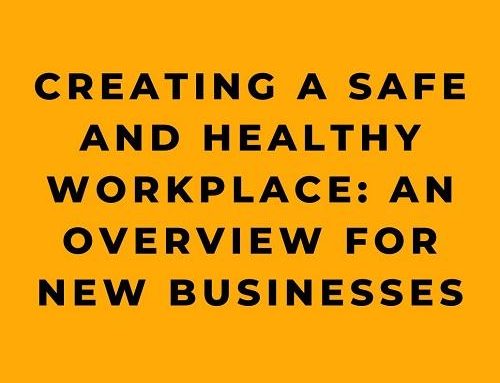I. Introduction
A. Definition of OSHA 10 Training
OSHA 10 training is part of the OSHA Outreach Training Program, a voluntary initiative started in 1971, designed to promote workplace safety and health. It emphasizes hazard identification, avoidance, control, and prevention, rather than merely focusing on OSHA standards. Between FY 2016 and FY 2020, more than 5.21 million workers were trained, making the workplace more knowledgeable about hazards and rights (Source: OSHA Outreach Training Program).
This specialized educational program is like handing over a sturdy hammer to help folks nail down safety right where they need it. In 2019, about 2.8 million nonfatal workplace injuries were recorded, highlighting the need for safety education (Source: Bureau of Labor Statistics). By investing a little in OSHA 10 training, employers stand to gain by reducing accidents and fostering an environment that’s safe and sound for everyone. It’s a preventive approach, seeking to stop accidents before they occur, not unlike putting up a sturdy fence to keep the critters out.
Now, let’s not overlook the fact that OSHA 10 training ain’t just for the big companies. Small businesses and independent contractors can find value in these courses too. You see, safety isn’t something that comes in one-size-fits-all. It’s tailored to the work at hand, whether you’re building skyscrapers or fixing the neighbor’s fence. It’s about common sense and good judgment, wrapped up in a neat package that anyone can understand. Like a trusty pocketknife, it’s a tool that fits into any job, helping folks to make the right choices when it counts the most. It’s not just about rules; it’s about taking care of each other, which is something we all can stand behind.
Note: For those specifically seeking OSHA-authorized online Outreach Training, it’s important to be aware that there are specific organizations recognized by OSHA for this purpose. OSHA encourages interested students to research multiple vendors from their authorized list to find the program that best fits their training needs. OSHA cannot validate training offered by vendors other than those listed in their authorized provider list. Please ensure to consult the official OSHA website for the most accurate and up-to-date information on authorized training providers.
B. Purpose of OSHA 10 Training
The crux of OSHA 10 training isn’t just to adhere to regulations; it’s about real-world safety. Covering topics such as hazard recognition, fall protection, and electrical safety, it’s designed to prepare workers to respond appropriately to emergencies, like knowing how to wield a fire extinguisher in a blaze. This training acts as a guideline, equipping workers with the wisdom to handle situations that can arise in their specific industry. Think of it as giving them the fishing rod, not just the fish. It’s personalized, practical, and pragmatic, ensuring that everyone gets home safe at the end of the day.
And let’s not forget the ripple effect this kind of training can have. You teach one person how to spot a hazard or handle a tricky situation, and that knowledge spreads. Like ripples in a pond, the wisdom moves outwards, from worker to worker, team to team. In the end, you’ve got a whole workplace moving in harmony, safety-wise. It’s not just a course; it’s a culture. And that’s something worth tipping your hat to. It’s building a community where folks look out for one another, knowing what to do and how to do it. That’s the heart of OSHA 10, and it’s a heart that keeps on beating.
II. Benefits of OSHA 10 Training
A. Improved Workplace Safety
Reduced Workplace Accidents and Injuries: Investing in training means less risk of accidents, fewer medical bills, and a more harmonious workplace. It’s a bit like greasing the wheels – it just makes everything run smoother. Plus, it fosters a sense of team spirit where everyone’s looking out for each other.
And let’s not overlook the big picture here. Improved safety isn’t just about fewer scrapes and bruises; it’s about building a workplace where folks can trust one another and the environment around them. It’s like planting a garden – you start with good soil, add the right seeds, and water it with care. Before you know it, you’ve got a blooming field of trust and responsibility. Folks start to take pride in their work and their workplace. They feel empowered and valued. That’s not just good for morale; it’s good for business. It’s the kind of thing that makes a person wake up in the morning and say, “I’m glad to be part of this team.” That’s the real power of safety training. It’s more than rules and regulations; it’s about building a family on the job site.
Increased Awareness of Rights and Responsibilities: Workers trained in OSHA 10 are more likely to be aware of their rights, which helps to prevent workplace discrimination. Understanding the rules of the game makes the playing field fair and square for everyone involved.
But let’s take a step back and look at it from the ground up. When we’re talking about rights and responsibilities, we’re talking about respect. It’s about knowing that each person on that worksite has an essential role, just like cogs in a well-oiled machine. Each cog needs to know its place and function to make the whole thing run right. When workers understand what they’re entitled to and what’s expected of them, they take ownership of their roles. That’s a win for everyone, kind of like a bountiful harvest after a season of hard work.
Now, speaking of responsibilities, that’s where the rubber meets the road. A worker who knows his rights also knows his responsibilities. It’s a two-way street, and when folks are driving down that road with clear directions, there’s less chance of a fender bender. Whether it’s about wearing the right protective gear or following the correct procedures, it’s all part of the same package. It’s not just about what you can expect from your employer, but what you owe to yourself and your fellow workers. It’s a sense of duty, an unwritten code that keeps everything ticking along smoothly. It’s about standing shoulder to shoulder, knowing you’re all playing by the same rules, and heading toward the same goal.
Providing a Return on Investment for Employers: With an ROI of $4 to $6 for every dollar invested, it’s a bargain any way you slice it (Source: OSHA). And let’s not forget those lower insurance premiums. If done right, safety training can be a golden goose that keeps giving.
But you see, it’s not just about the dollars and cents, although that’s surely a part that’ll catch any wise employer’s eye. It’s about building a foundation, strong and true, for the whole operation. A well-trained workforce is a dedicated workforce. It’s like a trusty old tractor that never lets you down – always there, always ready to pull its weight. Employees feel cared for and respected, and in turn, they care about their jobs, their colleagues, and the company. That breeds loyalty, and loyalty, my friend, is a rare commodity you can’t put a price tag on.
Now, those lower insurance premiums and incentives are nothing to sneeze at either. Think of them as the sweet cherry on top of a well-baked pie. It’s the sort of thing that rewards good behavior. You put in the work, you get a little something back. It’s like planting an apple tree and watching it grow, knowing that in time, you’ll be enjoying some fine apples. It takes effort, sure, but the rewards? They’re well worth the wait. Safety training is an investment in the future of your business and your people. Done right, it can yield a harvest that benefits everyone involved. And that, I reckon, is what it’s all about.
B. Positive Impact on Morale and Productivity
A safe worker is a happy worker. And a happy worker is a productive worker. With reduced injuries and a heightened sense of safety, employee satisfaction, and business outcomes naturally soar. When folks feel taken care of, they’ll give their best, just like a well-tended garden. Plus, it fosters a sense of belonging and loyalty among the workforce, making for a cohesive and efficient work environment.
Now, let’s take a moment to consider what this means in the grand scheme of things. It’s more than just clocking in and clocking out. It’s about a sense of purpose, a feeling that you’re part of something bigger, something that matters. When the gears of the workplace are greased with trust and common goals, well, things just seem to click. Workers aren’t just filling a spot; they’re contributing to a community. And that’s a powerful motivator. It’s like pulling together to raise a barn; everyone’s effort counts, and everyone can stand back at the end of the day and feel proud of what they’ve built. That’s the kind of spirit that gets folks up in the morning, ready to give it their all. It’s a little touch of magic that turns a job into a calling. And that’s something you can’t just find lying around.
III. Requirements for OSHA 10 Training
A. Who Needs OSHA 10 Training
If you’re in construction, manufacturing, or healthcare, OSHA 10 training is likely your bread and butter. It’s like knowing your way around the kitchen in these fields. And it’s not just for the newbies; even experienced workers can benefit from a refresher now and then.
You know, this idea of ongoing training is a bit like sharpening a well-used knife. Even the best blade gets dull with use, and then it’s time to hone it back to its best. The same goes for safety skills. Over time, practices may shift, new equipment gets introduced, and what once was second nature might start to slip. That’s where a course like OSHA 10 comes in handy. It’s there to remind folks of the essentials, to keep them sharp, so they can slice through their daily tasks safely and efficiently. Whether you’re a seasoned pro or just starting out, this training has something to offer, ensuring that everyone has the know-how to keep their workplace as safe as houses.
B. How to Obtain OSHA 10 Training
It’s as easy as finding a good fishing spot. Courses are available online through OSHA’s website or local offices, and some employers even offer training on-site. A completion card will be your badge of honor. It’s a symbol of professionalism and commitment to safety, much like a craftsman’s well-worn tools.
And don’t think of this as just another piece of paper to stuff in a drawer. Consider it like a trusty compass, always guiding you toward safety. This little card is more than just proof of completion; it’s a reminder of the knowledge you’ve gained and the responsibilities you hold. Whether you’re taking the course for the first time or you’re back for a refresher, remember, it’s a journey to make your daily grind safer. Keep it handy, and let it remind you to steer clear of those hidden hazards, so you and your crew can keep sailing smoothly on the sea of work. That’s worth every penny spent and every minute devoted to this vital training.
IV. Content of OSHA 10 Training
A. Overview of OSHA Regulations
From hazard recognition to personal protective equipment, it’s the rulebook for staying safe. Knowing them is like having a good recipe – it helps you get the dish right every time. It’s about understanding the ‘why’ behind the rules, turning guidelines into practical wisdom.
But this ain’t just a one-size-fits-all set of instructions. The OSHA regulations are crafted to cater to different industries, like different spices for different meals. By going through OSHA 10 training, you’ll learn how to tailor these rules to your specific workplace, making them part of your daily routine. It’s about learning the rhythm of safety, so it becomes a part of you, like a song you can’t help but hum while you work. That way, safety doesn’t become a chore, it becomes as natural as breathing. Just as a master chef knows just the right pinch of salt, you’ll know how to season your work environment with the perfect blend of caution and confidence.
B. In-Depth Training
Hazard Recognition: Identifying hazards like chemical spills or electrical faults ain’t just luck; it’s skill. It’s knowing where to look and what to look for, like spotting a good apple in a bushel. You’ve got to train your eye, develop a sixth sense almost, for seeing trouble before it finds you. It’s not unlike a farmer knowing when a storm’s coming just by sniffing the air.
Fall Protection: Like learning to dance, it’s all about balance and proper equipment. Knowing how to move and what to wear can make all the difference between a good day and a bad fall. And it’s about trust, too, trust in the gear and the folks around you. One wrong step without proper precaution, and you might find yourself in a pickle.
Electrical Safety: It’s a shocking matter if handled incorrectly. Training includes lockout/tagout procedures. Understanding the ins and outs of electricity is essential, like knowing the lay of the land before you venture out. It’s harnessing a wild horse – you’ve got to respect it, understand it, or else it might just buck you off.
Personal Protective Equipment (PPE): Hard hats, safety glasses, and respirators – the armor of the modern worker. They’re the silent guardians that stand between a worker and potential harm. But it ain’t just about wearing them; it’s about knowing which one fits the job, like choosing the right wrench for a stubborn bolt.
Fire Safety: Know your way around fire extinguishers and hazards, and you’ll sleep better at night. It’s not just about battling blazes; it’s about understanding how to keep them from starting in the first place. A little prevention goes a long way, much like a little salt can bring out the whole flavor in a pot of soup.
Ergonomics: Lifting properly is an art form, and ergonomic equipment is the brush. It’s about working smarter, not harder, and ensuring that every motion contributes to health, not harm. But it’s more than just not throwing out your back; it’s about creating a rhythm of work that feels good and keeps you going strong. Like a good song, it keeps you moving without wearing you down.
Materials Handling: Moving materials around the job site is more than hauling stuff here and there. It’s about understanding what you’re carrying, like a shepherd knows his flock. The right way can be the difference between a job well done and an accident waiting to happen. It’s about more than muscle; it’s about mind.
V. Conclusion
A. Summary of OSHA 10 Training
OSHA 10 training is more than a requirement; it’s a lifeline in the world of work. It covers everything from recognizing hazards to ergonomic practices, making the workplace not only compliant but also safer. It’s a commitment, a pledge to put safety first, ensuring that each day ends with a job well done. Just like a hearty meal warms you from the inside out, this training nourishes the soul of the workplace, fostering an environment where people don’t just work; they thrive.
B. Importance of OSHA 10 Training
A good day’s work is important, but getting home safely is the real prize. OSHA 10 training is the roadmap to that goal, making it not just necessary but vital for workers and employers alike. It’s the good neighbor policy for the workplace, making sure everyone’s looked after and taken care of. In the end, it’s about people, not just policies, making each worker a valued part of the whole. And let’s not forget the unspoken benefit: peace of mind. Knowing you’ve done right by your folks, having that assurance that you’re giving them the tools to protect themselves – now, that’s a feeling you can’t put a price tag on.
Now, while OSHA 10 training is a lifeline in the world of work, it’s not the only path to ensuring safety. Sometimes, there’s more than one way to build that strong fence, and our new training packages provide an economical and authoritative alternative to the traditional OSHA 10 training.
Let’s explore what we offer:
Introducing Our OSHA-Equivalent 10-Hour General Industry Training Packages
OSHA’s 10-Hour training curricula have always been the gold standard for safety and regulatory compliance training. But now, employers have an alternative with our authoritative, economical, and OSHA-equivalent training packages.
Our complete training libraries for General Industry are equivalent to OSHA’s 10 General Industry curricula. All of the topics in these libraries are available as online (SCORM) courses and Video On Demand (VOD) programs that can be taken over the internet, as well as DVD courses that can be played locally at your facility. Employees who complete the curricula will receive a wallet card verifying that they have been trained on the topics that the OSHA curricula recommend.
Here’s what we’ve got lined up for you:
Mandatory Courses (7 Hours): Including Introduction to OSHA, Safety Orientation, Walking and Working Surfaces, Emergency Planning, Industrial Fire Prevention, Electrical Safety, and more.
Elective Courses (3 Hours): Dive into Hazardous Materials Labels, Materials Handling Safety, Machine Guard Safety, Introduction to Industrial Hygiene, and more.
Please note: We are not an OSHA-Authorized Online Outreach Training Provider. But rest assured, our courses are tailored to give you the grounding needed in the areas that OSHA finds most important.
Pricing Details:
Interactive Online Package Price: $199.00
VOD/Video Streaming Package Price: $179.00
Investing in our OSHA-equivalent training packages is like planting seeds for a safer tomorrow. Equip your team with the knowledge and tools they need to cultivate a workplace where safety blossoms. Contact us today to begin the journey towards a stronger, safer work environment.










